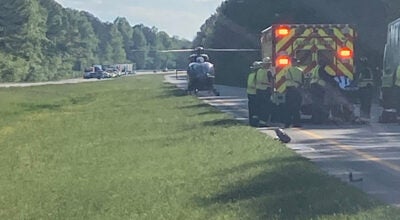Prepare before the storm
Published 8:46 pm Tuesday, June 8, 2010
Once the Virginia coastline is under a hurricane warning or once an evacuation order is issued, it may be too late to start getting prepared for the storm and its aftermath.
Whether it’s for hurricane season, any other natural disaster or an emergency such as a terrorist attack or long-term power outage, being prepared before the emergency and the ensuing panic could make a vital difference.
The American Red Cross and the state government both promote, “Get a Kit. Make a Plan. Stay Informed.”
“We promote preparedness,” said Ashley Greene of the Suffolk chapter of the American Red Cross. “Preparedness is the key. Otherwise, you might find yourself in a situation that when an emergency presents itself, there may not be a lot of time.”
The minimal recommended emergency kit and supplies should contain three days’ worth of necessities.
Even for something as basic as an emergency food supply, though, there are more considerations to have in mind, and have in an emergency kit.
For example, even canned food should be checked every six months to a year. Just as important is a way to get to the canned food.
“A manual can opener is a necessity. Your canned food won’t do any good if you’re used to an electric can opener,” Greene said.
Water is more critical in an emergency than anything, even food. Most people underestimate the amount of water humans need each day for drinking and sanitation.
If wells are out of operation for days after a hurricane, a family needs to have a minimum of one gallon of water per person per day. Readyvirginia.gov recommends having three gallons per person per day.
A radio is a good tool to have before, during and after a hurricane, but again, having the right type of radio, a battery-operated or hand-crank radio, will ensure its usefulness.
Copies of important documents, such as birth certificates, insurance information and Social Security cards, and some cash in reserve, should ATMs be out and banks be closed, are valuable ideas, but perhaps not obvious ones.
Having a plan, including knowing evacuation routes, alternate evacuation routes and the location and rules of the nearest emergency shelter is important. It’s even more important, though, that everyone in a family knows the same plan.
Not every emergency kit and plan should automatically be the same. Greene said to remember family members with special needs or medical needs, as well as infants and the elderly.
Some people might have put together a good emergency kit years ago, Greene said, but “things change. Prescriptions change. There might be more children now than the last time you checked your supplies, so you’ll need more water. Even something like batteries might not be good after a few years.”
Pets should be part of a plan, too. It’s good to know where pet-friendly shelters (in Suffolk, that’s Nansemond River High School) and hotels are along an evacuation route.
Saving the loving family friend is probably enough of a reason, but there’s more to it than that. Rescue personnel recommend people take their pets with them when they evacuate because finding injured or trapped people after the storm can be more time-consuming or dangerous if pets are loose and uncared for.






